| Date | Text | |
|---|---|---|
30 Nov 1963

cosmic microwave background radiation |
cosmic microwave background radiation (astronomy and space ) First recognition of cosmic microwave background radiation as a detectable phenomenon. |
|
30 Nov 1963

Robin Holliday |
Robin Holliday (biology) British molecular biologist Robin Holliday proposes existence of the Holliday junction in nucleic acid. |
|
30 Nov 1963

PL/I |
PL/I (computer science) PL/I (Programming Language I), a block-structured computer language, is created by George Radin, while at IBM. |
|
30 Nov 1963

Good Friday |
Good Friday (earth sciences) March 27 (Good Friday) – Great Alaskan earthquake, the second most powerful known, with a magnitude of 9.2. |
|
30 Nov 1963

Paul Cohen |
Paul Cohen (mathematics) Paul Cohen proves the independence of the continuum hypothesis. |
|
30 Nov 1963

Jacques Tits |
Jacques Tits (mathematics) Jacques Tits publishes significant work on group theory. |
|
30 Nov 1963

Jerome Horowitz |
Jerome Horowitz (medicine) Jerome Horowitz synthesizes zidovudine (AZT), an antiviral drug that will come to be used in treating HIV. |
|
30 Nov 1963

Temazepam |
Temazepam (medicine) Temazepam first synthesized. |
|
30 Nov 1963
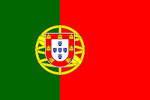
Portugal |
Portugal (medicine) Fernando Alves Martins of Portugal applies optical fiber technology to a gastrocamera to produce the first such device with a flexible fiberscope, for use in esophagogastroduodenoscopy. |
|
30 Nov 1963

papers |
papers (physics) Three papers are published by Robert Brout and François Englert,Peter Higgs, and Gerald Guralnik, Dick Hagen, and Tom Kibble, predicting the Higgs boson and Higgs mechanism (or Englert–Brout–Higgs–Guralnik–Hagen–Kibble mechanism) which provides the means by which gauge bosons can acquire non-zero masses in the process of spontaneous symmetry breaking. As part of Physical Review Letters ' 50th anniversary celebration, the journal will recognize each of these contributions as milestone papers in its history. |
|
30 Nov 1963
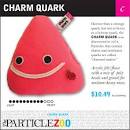
charm quark |
charm quark (physics) Existence of the charm quark is speculated by James Bjorken and Sheldon Glashow. |
|
30 Nov 1963

John Stewart Bell |
John Stewart Bell (physics) John Stewart Bell publishes a paper on the EPR paradox originating Bell's theorem. |
|
30 Nov 1963

Eric Berne |
Eric Berne (psychology) Publication of Eric Berne's book Games People Play: The Psychology of Human Relationships. |
|
30 Nov 1963

Farrington Daniels |
Farrington Daniels (technology) Farrington Daniels' book Direct Use of the Sun's Energy is published. |
|
11 Jan 1964

U.S. Surgeon General |
U.S. Surgeon General (medicine) U.S. Surgeon General Luther Terry reports that smoking may be hazardous to health in the first such statement from the Federal government of the United States. |
|
16 Jan 1964

angioplasty |
angioplasty (medicine) First angioplasty carried out, on the superficial femoral artery by U.S. interventional radiologist Charles Dotter. |
|
23 Jan 1964

Animal-to-human heart transplant |
Animal-to-human heart transplant In 1964, the first animal to human heart transplant was made. Dr. James Hardy at the University of Mississippi transplanted the heart of a chimpanzee (named Bino) into the chest of Boyd Rush (age 68) in a last-ditch effort to save the man's life because no human was heart available. The newly-transplanted heart beat on its own; but it was too small to maintain independent circulation and Rush died after 90 minutes. Hardy had to endure some severe criticism. (This was three years before Christiaan Barnard performed the first successful human heart transplant). Hardy also made the first human lung transplant in 1963 and a double-lung transplant that left the heart in place in 1987. |
|
23 Jan 1964

Smithsonian Institution |
Smithsonian Institution (history of science a) The Smithsonian Institution's Museum of History and Technology opens to the public in Washington, D.C. |
|
23 Jan 1964

heart transplantation |
heart transplantation (medicine) First heart transplantation on a human, using a chimpanzee heart, carried out by U.S. surgeon James D. Hardy on Boyd Rush, but the organ is rejected after a few hours. |
|
05 Feb 1964

Matilde E. Moisant |
death Matilde E. Moisant Matilde E. Moisant (born 1878), American pioneer aviator. |
|
20 Mar 1964

European Space Agency |
European Space Agency (astronomy and space ) The precursor of the European Space Agency, ESRO (European Space Research Organization) is established (under an agreement of June 14, 1962). |
|
28 Mar 1964
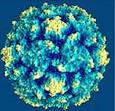
Epstein-Barr virus |
Epstein-Barr virus (medicine) The Epstein-Barr virus is first described, by Anthony Epstein, Bert Achong and Yvonne Barr in London. |
|
07 Apr 1964

IBM |
IBM (computer science) IBM announces the System/360, in six models with 32-bit architecture. |
|
24 Apr 1964

Gerhard Domagk |
death Gerhard Domagk Gerhard Domagk (born 1895), German winner of the Nobel Prize in Physiology or Medicine. |
|
01 May 1964
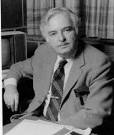
John George Kemeny |
John George Kemeny (computer science) John George Kemeny and Thomas Eugene Kurtz run the first program created in BASIC (Beginners' All-purpose Symbolic Instruction Code), an easy to learn high level programming language that will eventually be included on many computers and even some games consoles. |
|
30 May 1964
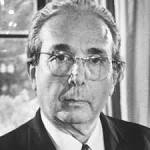
Leó Szilárd |
death Leó Szilárd Leó Szilárd (born 1898), Hungarian-American physicist. |
|
04 Jul 1964
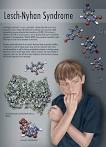
Lesch–Nyhan syndrome |
Lesch–Nyhan syndrome (medicine) Lesch–Nyhan syndrome is first described, by Drs Michael Lesch and William Nyhan. |
|
31 Jul 1964
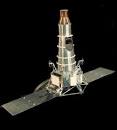
Ranger program |
Ranger program (astronomy and space ) Ranger program: Ranger 7 sends back the first close-up photographs of the Moon; images are 1,000 times clearer than anything ever seen from Earth-bound telescopes. |
|
01 Aug 1964

John Ostrom |
John Ostrom (paleontology) John Ostrom identifies remains of the dinosaur Deinonychus in Montana, significant in being a small, agile species closely related to the birds. |
|
25 Aug 1964
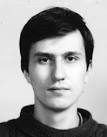
Maxim Kontsevich |
birth Maxim Kontsevich Maxim Kontsevich, Russian mathematician. |
|
04 Sep 1964

Forth Road Bridge |
Forth Road Bridge In 1964, the Forth Road Bridge opened. At 6,156 feet long it was the longest in Europe at that time. The Forth Road Bridge at Queensferry is shown at left. Both rail (1890) and road bridges are sited where hard volcanic rock is close to the surface and can make good foundations for the structures. Both bridges emphasise the historical importance of the Forth crossing as the opening of the Forth Road Bridge finally brought to an end a ferry service that could be traced back 800 years. |
|
01 Oct 1964

Robert Moog |
Robert Moog (technology) Dr. Robert Moog demonstrates his prototype synthesizers. |
|
12 Oct 1964
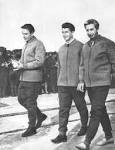
Voskhod 1 |
Voskhod 1 (astronomy and space ) The Soviet Union launches the Voskhod 1 into Earth orbit as the first spacecraft with a multi-person crew and the first flight without space suits (the crew wouldn't fit in the space capsule otherwise). |
|
16 Nov 1964

Donald Culross Peattie |
death Donald Culross Peattie Died 16 Nov 1964 at age 66 (born 21 Jun 1898). American botanist, naturalist and author who won high critical acclaim for his several books on plant life and nature. After college, he joined the U.S. Department of Agriculture as a botanist in the office of foreign seed and plant introduction. From 1922-3 he worked on frost resistance in tropical plants. In 1926, he left the USDA to free-lance in his own field, writing books and also began a nature column in the Washington Star which ran for 10 years. An example of his writing for lay people, his book Flowering Earth (1939, reprinted 1991) reveals the miracle of plant life. Needing no chemical formulas or botanical glossary, it involves the reader in the vital stories of chlorophyll and of protoplasm, of algae and seaweeds, conifers and cycads. |
|
01 Dec 1964

J. B. S. Haldane |
death J. B. S. Haldane J. B. S. Haldane (born 1892), British geneticist. |
|
17 Dec 1964

Victor Franz Hess |
death Victor Franz Hess Victor Franz Hess (born 1883), American physicist. |
|
30 Dec 1964

Hans Gerhard Creutzfeldt |
death Hans Gerhard Creutzfeldt Hans Gerhard Creutzfeldt (born 1885), German neuropathologist. |